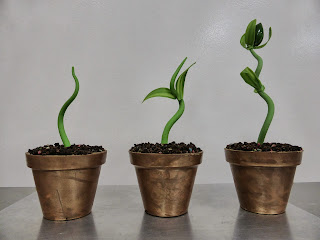I've got some great photos to share with you people. Today, I completed a two day entremets class. Entremet is a French term. Put simply, it is a layered dessert. Be aware however, that the layers aren't the complete width of the cake, but are an insert within the entremet. As with verrines, you want a variety of textures with two or three complementary flavours. There is usually a biscuit or sponge layer, as the base. Other layers can include a jelly, a cream, a brulee & a crunch layer which can include nuts, cocoa nibs or biscuit crumb. A mousse is always a component between & surrounding the various layers. So, lets get on with the show.....
The Avellana contains the following components from top to bottom:
- caramel chocolate mousse
- vanilla cream disc
- hazelnut sponge with a streusel crunch layer, also flavoured with hazelnut
- more caramel chocolate mousse
- another disc of hazelnut sponge with streusel crunch
This entremet was sprayed with chocolate paint & decorated.
Normandy differs somewhat from the other cakes in that the side decorative component needs to be in place before the cake can be assembled, rather than it being decorated after assembly. The yellow pattern on the side is a coloured décor paste backed with a jaconde, which is a pliable (if not overbaked) almond sponge, allowing it to be manipulated into a ring. The other components that make up this entremets are, from top to bottom:
- vanilla mousse
- lemon cream
- a second layer of vanilla mousse
- baked apple
- shortbread
This cake was topped with a layer of meringue which was then torched to colour.
Guayaquil is named after the bitter dark chocolate that is an ingredient of the mousse. This entremet combines the flavours of chocolate & mandarin. More specifically, this entremet is composed of the following layers, from top to bottom:
- chocolate Bavarian mousse
- mandarin brulee
- a thin layer of chocolate mousse
- almond & cocoa nib crisp
- a further thin layer of chocolate mousse
- chocolate sponge
A shiny chocolate glaze coats this entremet.
The Almond contains the following flavoured layers, from top to bottom:
- almond gianduja mousse
- strawberry jelly
- a second layer of gianduja mousse
- an almond & anise crunch
- more mousse
- chocolate biscuit with strawberry
This entremets is also sprayed with red coloured chocolate paint.

The shiny red glaze on this entremet, flavoured with blood orange, is a real eye catcher. Within, you find the following layers, from top to bottom:
- chocolate mousse
- apricot coulis
- apricot cream
- flourless chocolate biscuit
- more chocolate mousse
- a second flourless chocolate biscuit
Surrounding this entremet is a crisp ring of recomposed crumble.
When you cut an entremet & view a cross section, each layer should be distinguishable, as shown below with the Avellana entremet.
The cross section shows a distinct layering of mousse, vanilla cream, sponge with streusel, mousse & a second sponge & streusel layer.
As an aside, I want to send my Dad lots of love & best wishes for a wonderful birthday tomorrow. Hope your special day is memorable. xxx


















































